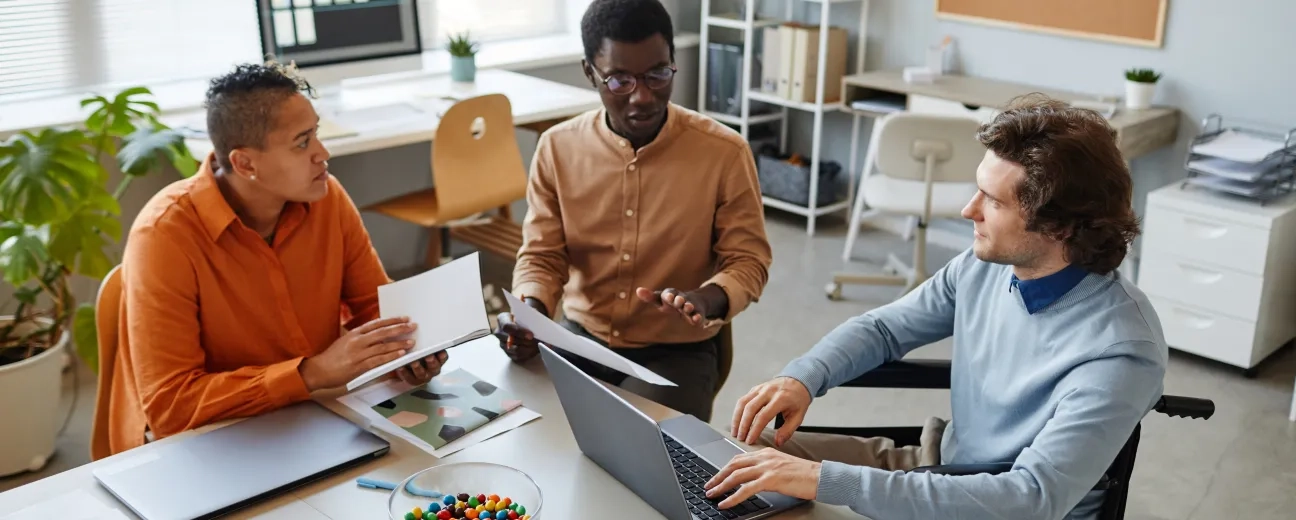
We’re excited to hear your project.
Let’s collaborate!

For it's not just the developer's job to code it or the designer's task to design it. It's your responsibility as well, as a content editor, to... write a website's accessibility. Creating accessible content is how you can contribute, directly, to ensuring its accessibility.
Since it's a shared responsibility: a website's accessibility is not just coded and designed, it's written, as well.
Your own accessibility checklist, as a content editor, would include tasks like:
In one word: your self-assigned “mission” when it comes to making a website accessible for everyone is to create/further optimize every aspect of the website's content with accessibility in mind.
With empathy...
First of all, we should make one thing clear:
“Web content that's accessible to everyone” doesn't mean just “web content that's also accessible to people with various disabilities".
It also refers to content that can be easily accessed and understood by:
Now, a website's content is accessible if it follows the WCAG 2.0 standards from the W3C. Or the POUR checklist if you wish:
Here's a quick empathy test for you:
Imagine that you're a visually impaired user. You access a website displaying lots of visually-striking imagery that you cannot or can hardly see.
Or maybe there's a button there, on the homepage, that you need to click in order to listen to a podcast, but you just can't spot it.
See my point?
Creating accessible content means adding alternative text to every non-text content element — image, design element, chart/table, button — on the website. Screen readers can read text only: they cannot interpret images for their assisted users...
For clear copy is... accessible copy.
Keep your writing simple, your core ideas clear and always use plain language. This way, you'll make the message on the website accessible to everyone:
Writing for accessibility means, among other things:
Structuring and styling your content so it's scannable.
And relevant, properly formatted headlines will allow assistive technologies (and their assisted users, implicitly) to scan through your content, jumping from heading to heading.
This way, they can easily find what they're particularly interested in, instead of forcing them to go through the entire chunk of content.
Note: if you overlook to format your headlines using the <h> tag, the assistive technologies won't recognize them as... headlines.
And creating accessible content does mean tackling "the links issue”:
Whenever you're creating a link, make sure to add a descriptive link text, too. This way, it will be crystal clear, to all users, what kind of page that link would take them to, once/if clicked...
Can't have a clean, scannable text without some bulleted or numbered lists strategically “sprinkled” here and there, right?
Just remember to format them properly:
Now, just try to step into the shoes of a non-native English speaker, of a hard of hearing/deaf visitor or of a user unfamiliar with the speaker's accent. How accurately would you be able to understand a video or audio piece of content?
Creating accessible content means, also, adding text versions — captions — to the videos and the audio content displayed on the website.
Note: also, keep in mind to add a static transcript, too, useful for any user who won't/can't access your video or audio content and depends on the equivalent text
Making your content (more) accessible should be an integral part of your editorial workflow, not a last-minute checklist to handle.
Therefore, grow a habit of:
In short: adopt an accessibility-first approach to your content!

We’re excited to hear your project.
Let’s collaborate!